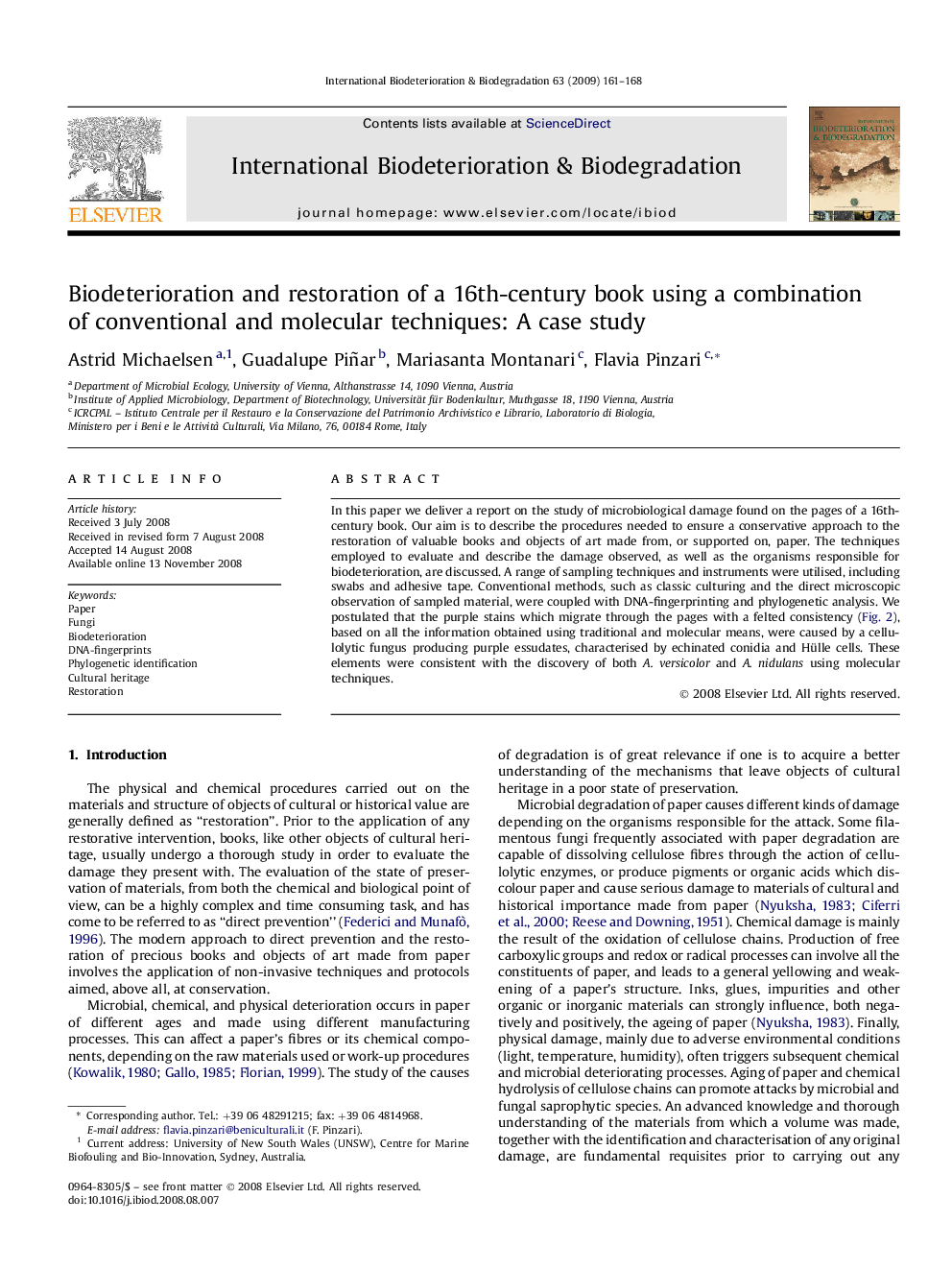| Article ID | Journal | Published Year | Pages | File Type |
|---|---|---|---|---|
| 4365434 | International Biodeterioration & Biodegradation | 2009 | 8 Pages |
In this paper we deliver a report on the study of microbiological damage found on the pages of a 16th-century book. Our aim is to describe the procedures needed to ensure a conservative approach to the restoration of valuable books and objects of art made from, or supported on, paper. The techniques employed to evaluate and describe the damage observed, as well as the organisms responsible for biodeterioration, are discussed. A range of sampling techniques and instruments were utilised, including swabs and adhesive tape. Conventional methods, such as classic culturing and the direct microscopic observation of sampled material, were coupled with DNA-fingerprinting and phylogenetic analysis. We postulated that the purple stains which migrate through the pages with a felted consistency (Fig. 2), based on all the information obtained using traditional and molecular means, were caused by a cellulolytic fungus producing purple essudates, characterised by echinated conidia and Hülle cells. These elements were consistent with the discovery of both A. versicolor and A. nidulans using molecular techniques.
